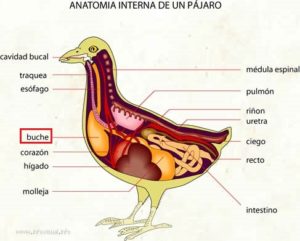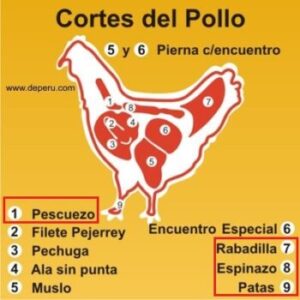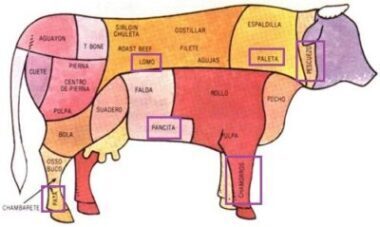Alternative Anatomy (in Spanish)
By Gloria M. Rivera
The first time I heard “me duele la paleta”, the Peruvian in me was very confused. In Perú, a “paleta” is a small wooden racket, like the one used for playing ping-pong. After growing up in Lima watching Mexican TV shows, I was aware and quite confident, that in Mexico a “paleta” was a lollipop or a popsicle, so I was at a loss when this Mexican patient used that term and there was no candy in sight, just a shoulder blade that he had injured at work.
I have worked as a medical interpreter both in Arizona and California and have taught in New Mexico. Through this experience I have realized that the average patient’s educational level is around or below fourth grade level and that some of them lived in ranchos. Therefore, some patients borrow names of body parts for animals and are not aware that other options are available.
As medical interpreters we need to be aware of these alternative body parts in order to convey the same meaning in English. I do not recommend using these terms with patients, unless they use them first because some may find our using animal body parts offensive. For example, if a provider asks the patient about a stomachache I would not ask the patient if his “tripas” or “panza” hurt, but if he has a “dolor de estómago”. On the other hand, if the patient says “me duelen las tripas” I would interpret he has a “stomachache.” I do this in order to avoid confusion with the provider and because one physician once told a colleague that “he was an orthopedic surgeon, not a veterinarian.”
The first time I heard “me duele la paleta”, the Peruvian in me was very confused.
Here is a list of terms patients borrow from animals to refer to their own body parts. I have compiled while working as a court and medical interpreter in Arizona and California.
I have listed the terms from top to bottom, not alphabetically, and provided one example of how it is used in Spanish and the recommended equivalent in English.
1. Trompa: This is a pig’s nose or the long, elongated nose of some animals such as elephants or tapirs. This word may also be used as a verb, “trompazo”, which means a hard blow to the nose/face.
“Me cerraron la puerta en la cara y me dieron en la trompa” means “the door was slammed in my face and I got hit on the nose.”
2. Hocico: The area of the animal where the mouth and the nose are located.
“Me tropecé y me caí de hocico” would be “I tripped and I fell forward”.
In this case, we use the mouth in Spanish as a point of reference, just like “echarse boca arriba” o “echarse boca abajo”.
It can also be used in a pejorative way to talk about a person’s mouth.
“Cállate el hocico” would be “shut your pie hole“.

3. Cogote, pescuezo: The part of an animal that goes from the back of the neck to the trunk or thorax.
“Lo agarraron del pescuezo” would be “he was grabbed by the neck.”
4. Paleta: Scapula or shoulder blade. It is a cut of beef from the shoulder.
“Me duele la paleta” means “my shoulder blade hurts.”

5. Buche: It is the membranous sac that connects with the esophagus of birds. In other cases, it can be the stomach cows. This is why, when I heard “me duele el buche”, I clarified and the patient replied “es el cuello”.
“Siempre anda con el buche lleno” could be “he always has a full belly”.
6. Bofe: A cow or a pig’s lung.
“Tosí tanto que me sacudió el bofe” would be “I coughed so much that my lung hurt.”
7. Panza: Belly. In animals, it is one of the four stomach cavities in ruminants.
“Tuve dolor de panza y diarrea” would mean “I had a stomachache and diarrhea.”
8. Tripas: Intestines, belly. This can mean anything related to the entrails, intestines, innards, gut, bellies of animals.
“Si no como a las doce, me suenan las tripas” means “if I don’t eat at noon, my guts rumble.”
Note: “Tripe” in English means the stomach of a ruminant and not “tripa”. So, they are a false cognate we need to be aware of.
9. Lomo: In animals, this can be the entire back from the neck to the hips.
“Después de piscar aguacate me duele el lomo” would be “after picking avocados, my back hurts.”
Note: People who work in the fields use the Spanglish term “piscar” that comes from “to pick”.
10. Cuadril: Hip or lower back. This is the bone that comes form the last 2 ribs and hip of an animal.
“En el trabajo me agacho mucho y por eso me duele el cuadril” means “at work, I bend over a lot and that is why my lower back hurts.”

11. Espinazo: Spine, spinal column, vertebral column, or vertebrae.
“Tengo una hernia en el espinazo” means “I have a hernia on my spine.”
12. Rabadilla: This is in fact a chicken’s tailbone.
“Me caí y me golpeé la rabadilla” means “I fell and hit my tailbone.”
13. Patas: Legs, but also paws and hooves. Most animals have “patas”, so this is not borrowed from any animal in particular.
“Me duelen las patas” could be translated as “my hooves hurt” or “my paws hurt”, but a provider once told a friend of mine that he was a doctor, not a veterinarian. That is why I’d clarify with the patient in order to convey meaning and avoid confusion.

14. Chamorro: In an animal, this would be a beef shank or calf.
“Estoy parada todo el día y me duelen los chamorros” means “I stand all day long and my calves hurt.”
I hope this blog post helped you understand how our patients talk a bit more and how to convey the same meaning in English. I have added a couple of diagrams in Spanish below as well as some of the resources I used to put this post together.
Thank you for reading,
Gloria
Sources:
- Diccionario de la lengua española de la Real Academia Española de la Lengua
- Diccionario del español de México
- Diccionario de americanismos
- Vice. The Munchies Guide to Carnitas (Obtained on October 15, 2018)
- Diccionario Visual – Anatomía del ave (Obtained on October 15, 2018 at 8.33pm)
- DePeru.com – Cortes del pollo
- Colegio Yapeyú – Anatomía de la vaca
- Tulomito.com – Corte de res peruano